Great Lakes tribes’ knowledge of nature could be key to navigating climate change. Will enough people listen?
MOLE LAKE – In late August, Robert Van Zile Jr. looked out over Rice Lake with dismay. Brown spot disease had decimated this year's wild rice crop.
The lake is home to the last remaining wild rice bed on the Mole Lake Sokaogon Ojibwe Reservation, and one of the few ancient beds left in Wisconsin. Researchers collect seeds there annually for reseeding projects in other parts of the state. In addition to nutritional and cultural value, wild rice beds create habitat for fish, filter pollutants and nutrients out of the water, and provide food for migrating birds.
This year, Van Zile, chairman of the Mole Lake Ojibwe Tribe, had to deny researchers and other outside harvesters so there would be enough for tribal members.
“(Ricing) is very important because there are people who don’t have jobs, who have children, and they need the rice to provide for their families,” said Van Zile’s son, Leelyn Van Zile, who is a rice chief for the tribe. The rice – manoomin, in Ojibwe – is a staple in their diet.
Researchers believe the fungus causing brown spot disease is spreading quickly because it thrives on the intense rainfall and hotter, more humid weather ushered in with climate change. As extreme conditions become more common, natural resources will be stressed further.
Mole Lake Ojibwe tribal officials said the plant once grew on seven bodies of water within the reservation. Now, it occupies just the 2-mile shoreline of Rice Lake, mostly the result of development that was out of the tribe's control.
The Indigenous communities that call this region home have been practicing good land stewardship and sharing that message with others. But for too long, that message hasn't been heard.
The tribes hold thousands of years of expertise. They believe their traditional ecological knowledge is critical to safeguarding resources and cleaning up the land, air and water for everyone. And they're keenly aware that our relationship with nature is at one of the most critical junctures in history.
The question is: Will anyone pay attention?
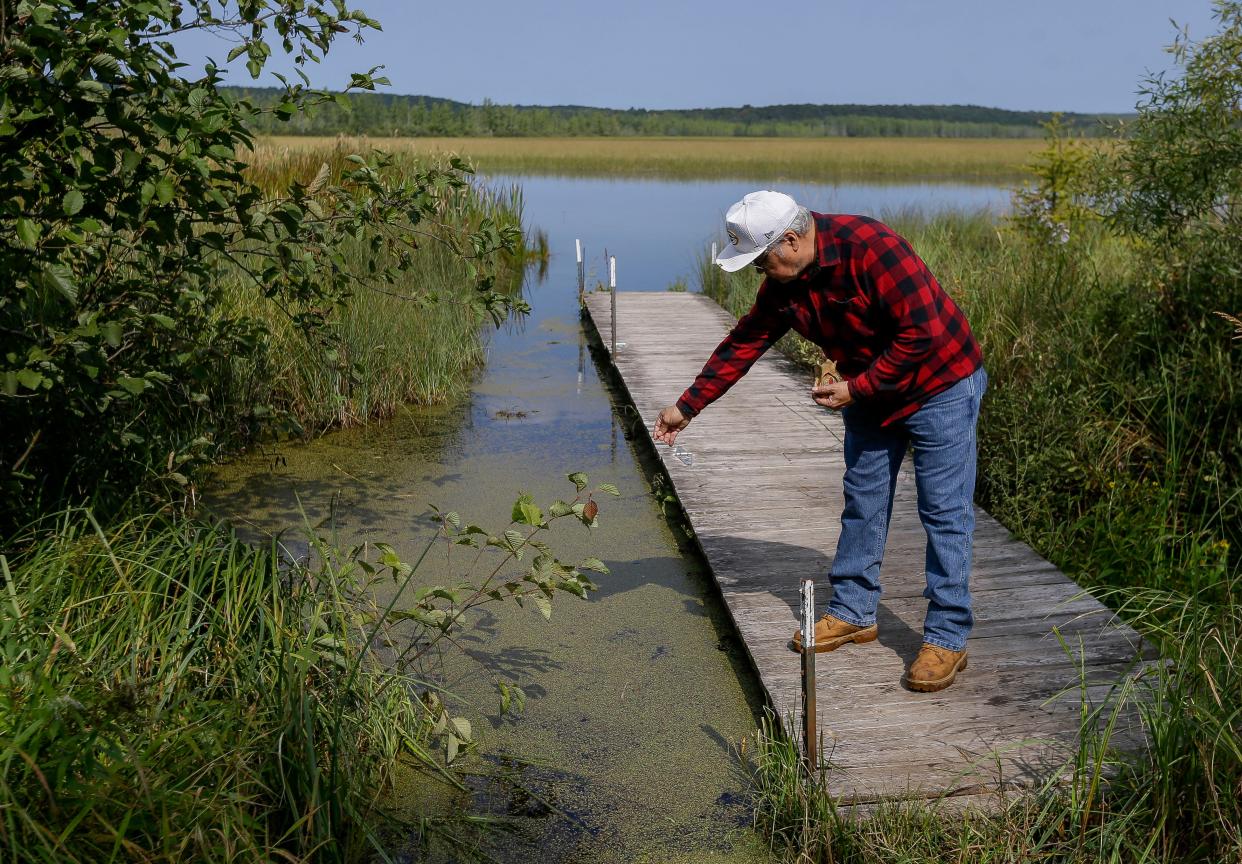
Is the U.S. government at fault?
Some say that’s not just an environmental issue. It’s a legal one.
The federal government has failed to consistently uphold tribal treaty rights against the state and developers, tribes contend, shirking its duty to protect resources on reservations and ceded territories. (Ceded territories are off-reservation lands where tribes have the rights to hunt, fish and gather.)
“If we don’t have access to the walleye or wild rice anymore because they’re extinct because of climate change, that is a fault of the U.S. government because they have violated that treaty,” said Bazile Minogiizhigaabo Panek, a member of the Red Cliff Band of Lake Superior Ojibwe, and a consultant for the Institute for Tribal Environmental Professionals, based at Northern Arizona University.
Michael Regan, administrator of the U.S. Environmental Protection Agency, acknowledged to the Journal Sentinel that the agency has "room for improvement" when it comes to safeguarding tribal resources. Engaging with tribal leaders is a top priority, he said, and the EPA is hosting listening sessions and hoping to strengthen relationships.
Symbolic progress was made just last month when Milwaukee County became the first county in the state to pass a "rights of nature" resolution. The effort is part of a global movement grounded in Indigenous knowledge, and aimed at making sure human activities do not interfere with the health of land and waterways.
Panek has seen these positive shifts in recent years with more agencies, researchers and organizations asking to consult with tribes and integrate traditional ecological knowledge.
Still, there’s a long way to go.
Western thinking tends to separate people from nature, removing the responsibility to protect it, and making solutions seem out of reach.
Traditional ecological knowledge prioritizes gratitude and forward-thinking solutions, helping bring back the human connection with nature and the land.
Tribal governments are “an integral part of the success of what we're doing in this country,” Regan said. “As we clean up our waters and fight climate change, we know that our tribal leaders will help us solve this."
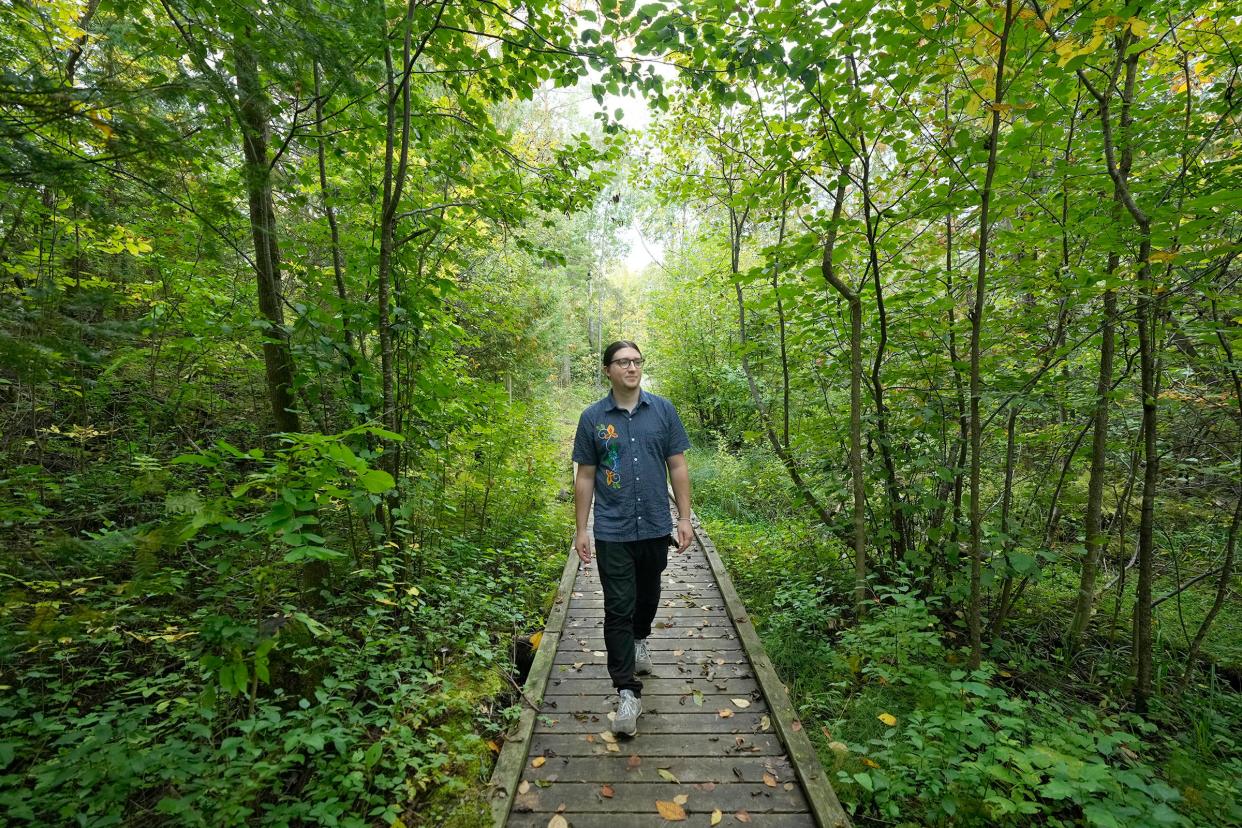
Treaty rights include protections for the environment
Wisconsin is home to 11 federally recognized tribes. Of those, six are Ojibwe, whose peoples started migrating to the upper Great Lakes region from the East Coast about 1,500 years ago. They were in search of a place to settle where prophesy told them they would find food that grows on water – making manoomin central to their identity.
The Ojibwe were forced to cede tens of millions of acres to the U.S. government in a series of four treaties, signed in 1836, 1837, 1842 and 1854, that created what is now Michigan, Wisconsin and Minnesota.
The Ojibwe tribes were put on reservations and granted “the usual privileges of occupancy,” according to the treaties, which means the rights to hunt, fish and gather in the off-reservation ceded territories.
Since the treaties were signed, there’s been disagreement over how to interpret them, particularly when it comes to natural resources. In Wisconsin, repeated penalization of tribal members for hunting, fishing and gathering off-reservation led the Lac Courte Oreilles tribe to sue the state in 1975. Five Ojibwe tribes joined in the lawsuit.
In 1983, a federal court of appeals sided with the tribes, affirming members’ right to hunt, fish and gather in the ceded territories. It also opened the door to a deeper understanding of what those rights meant about the protection of related resources.
The treaty right to fish is more than the physical act of casting a line or a net, said Whitney Gravelle, president of the Bay Mills Indian Community in Michigan’s Upper Peninsula. It’s about the environment the fish have to live in. And there not only needs to be clean water where the fish live, but in the tributaries that lead into them.
Robert Lundberg, associate attorney for the Tribal Partnerships Program at the environmental law group Earthjustice, pointed to Washington v. United States, in which tribes successfully argued that the state of Washington was infringing on treaty rights by building culverts that diminished the size of salmon runs in their traditional fishing areas.
“I think other people, too, are hopeful to see if that logic shows up elsewhere in other treaty rights cases – understanding that the right is more than just the right to take the fish, or shoot the deer, or harvest the plant,” Lundberg said.
More: Why is the recent ruling on Enbridge's Line 5 so important? Here are 8 reasons.
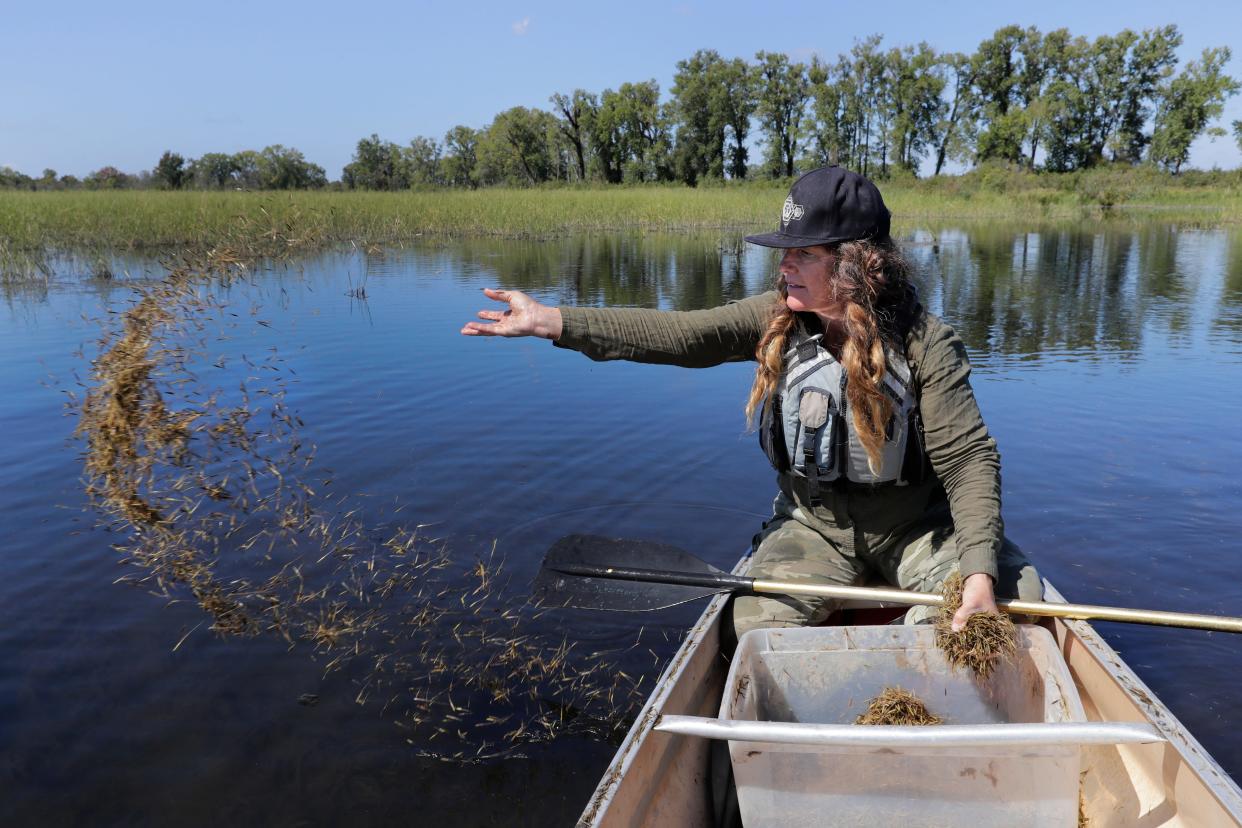
Wolf hunt controversy highlights breakdown between state, tribes
Even when treaty rights are affirmed, government officials may not collaborate with tribes.
Wolves recently started making a comeback in northern Wisconsin after more than four decades on the federal endangered species list.
The gray wolf is considered sacred by the Ojibwe, like a spiritual brother. Tribal officials also argue that wolves are necessary to a healthy ecosystem.
Adrian Wydeven, a biologist with the Rhinelander-based conservation group Green Fire, said wolves target diseased animals, such as deer, elk, reindeer and moose, before the disease can affect the rest of the herd. Wolves also encourage animal populations not to linger in a particular part of a forest, which may help the forest regenerate naturally.
Soon after the gray wolf was no longer classified as endangered, the Wisconsin DNR scheduled a hunting season on it. Some ranchers in northern Wisconsin had complained that wolves were killing their unprotected livestock.
Tribal officials favor non-lethal methods in resolving conflicts that wolves might have with pets and livestock. Non-lethal methods include using guard dogs or fladry — colored flags that flap in the wind and deter wolves from crossing an area or property.
In early 2021, the DNR set a quota of 200 wolves to be killed in the first hunt for population control. Following treaty rights, the Ojibwe claimed 81 wolves of that quota to be saved — and not available to hunters — as their portion.
Nevertheless, hunters trapped and killed 218 wolves.
Perhaps not surprisingly, gray wolves went right back on the endangered list in February 2022.
Six tribes filed suit in the Western District of Wisconsin over the wolf hunt in November 2021, and they hope to win a major victory for treaty rights.
It’s happened before.
Robert Van Zile Jr., the Mole Lake Ojibwe Tribe chairman, said elders still talk of when the tribe appealed to the local federal Indian agent a century ago to protect Rice Lake from loggers. At the time, lumber companies operating in the northwoods would float logs through Rice Lake on the way to a mill in Shawano.
The logs would destroy much of the manoomin.
Federal officials agreed, ordering the companies to stop.
Part of Leelyn Van Zile’s role as a rice chief today is to work with state officials, including from the Department of Natural Resources, to help protect the manoomin that is left — and hold people who tamper with it accountable.
More: Progress seen at Great Lakes' second-largest area of concern, on Minnesota-Wisconsin border
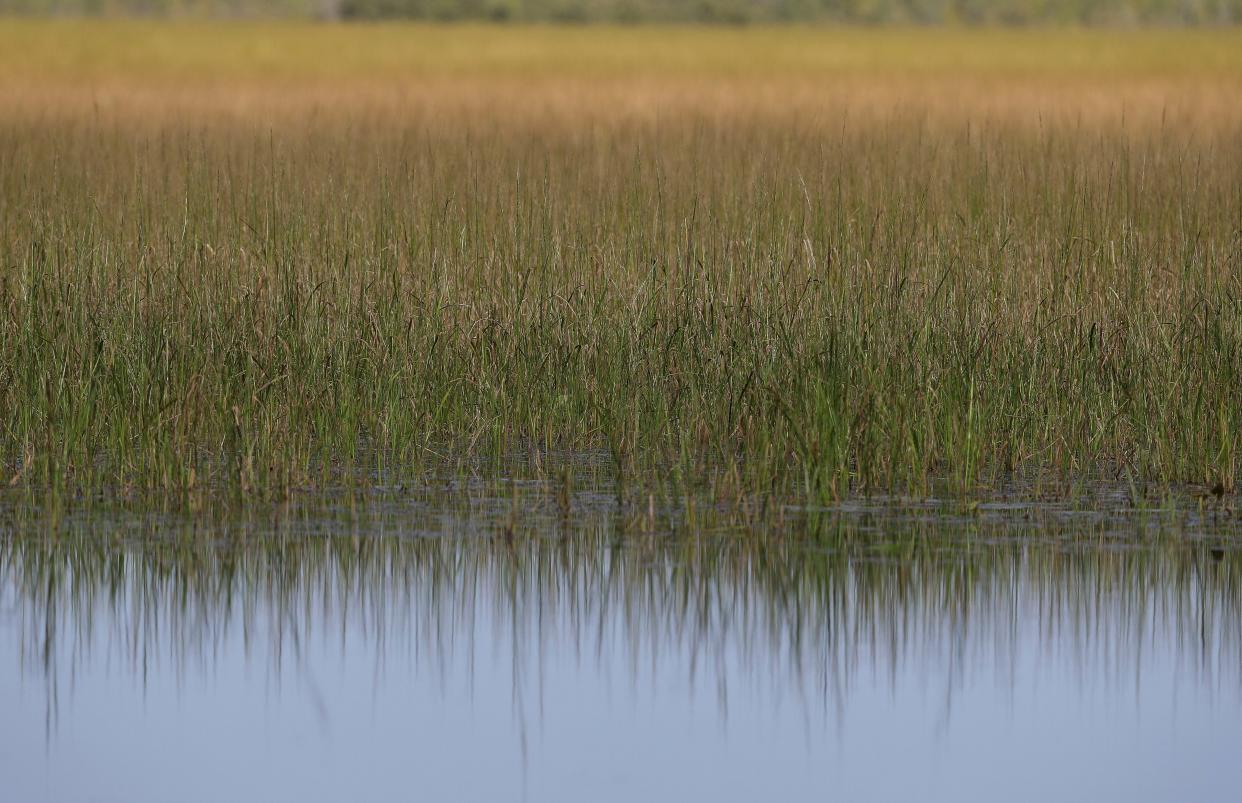
Traditional ecological knowledge is ‘a science in its own right’
There has been an increased push in recent years to integrate tribes’ ancestral knowledge and Western science to find better ways to understand and manage the land.
Western science breaks things down into pieces, sometimes missing the bigger picture, said Evan Larson, a geography professor at the University of Wisconsin-Platteville.
People often think traditional ecological knowledge is folklore, but it’s been through thousands of years of experimentation and trial and error, Panek said. “It’s a science in its own right,” he said.
Choosing to exclude that knowledge not only harms tribes’ way of life, but diminishes informed decision-making, Lundberg said. Drawing on what can be centuries’ worth of details about a particular natural resource can provide vital context. Without that context, “You’re going to be leaving out a really large and important part of the picture,” they said.
In addition to practical skills, traditional knowledge can also provide an important mindset shift, said Lois Stevens, an assistant professor of First Nations Studies at the University of Wisconsin-Green Bay. Stevens is a member of the Oneida Nation, part of the Haudenosaunee Confederacy, originally from what is now upstate New York.
For her, the key is to live in reciprocity with the landscape. Instead of looking to commercialize or commodify, people should have gratitude for the world around them, and consider themselves in partnership with it.
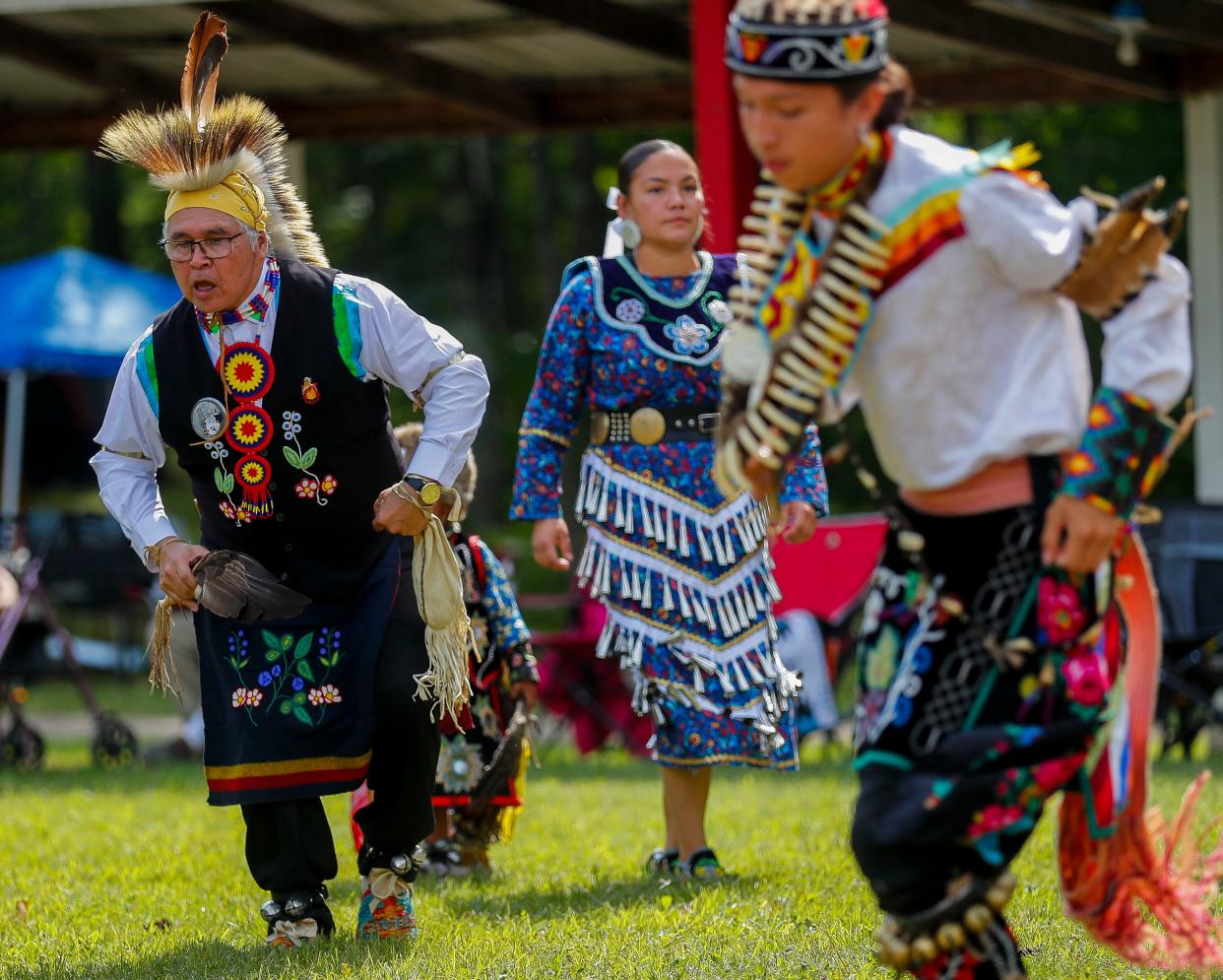
Fires catalyze conversation between traditional knowledge and Western science
The practical use of fire, so fraught with symbolism, may provide a path forward, showing how traditional ecological knowledge can inform land management practices.
The Ojibwe have used fire to manage the land for millennia. Prescribed burns help regenerate forests and grasslands, and prevent out-of-control wildfires by clearing fuel. Historically, Indigenous communities also used them to help increase blueberry production.
When European settlers arrived, their response was to suppress and put fires out.
Larson said government management agencies and private landowners now are beginning to realize the importance of getting more fire on the ground.
Earlier this year in northeastern Minnesota, the U.S. Forest Service in Superior National Forest and three Minnesota Ojibwe tribes made a first-of-its-kind agreement – a memorandum of understanding – that gives tribes a stronger voice in land management, including prescribed burning.
Prescribed burning is also being restored to the University of Minnesota’s Cloquet Forestry Center thanks to a partnership with Minnesota Ojibwe tribes. And in Wisconsin, Apostle Islands National Lakeshore collaborated with the Red Cliff Band, Bad River Band and other Ojibwe tribes to conduct prescribed burns on Stockton Island.
“What we’re living through now is an emerging opportunity for really powerful healing and collaboration,” Larson said.
Climate change is demanding such interaction.
When Panek was a child, his grandfather taught him that walleye would spawn when spring peepers made their first calls, signifying the start of the harvest. Now, climate change is affecting weather and water temperatures, he said, so those two events don’t always line up.
Ensuring treaty rights are intact means the environment is sustainable and healthy, Panek said. “That not only means that we benefit from these lands, but everyone does.”
The bright spot, Lundberg said, is that tribal knowledge could be in position to take center stage.
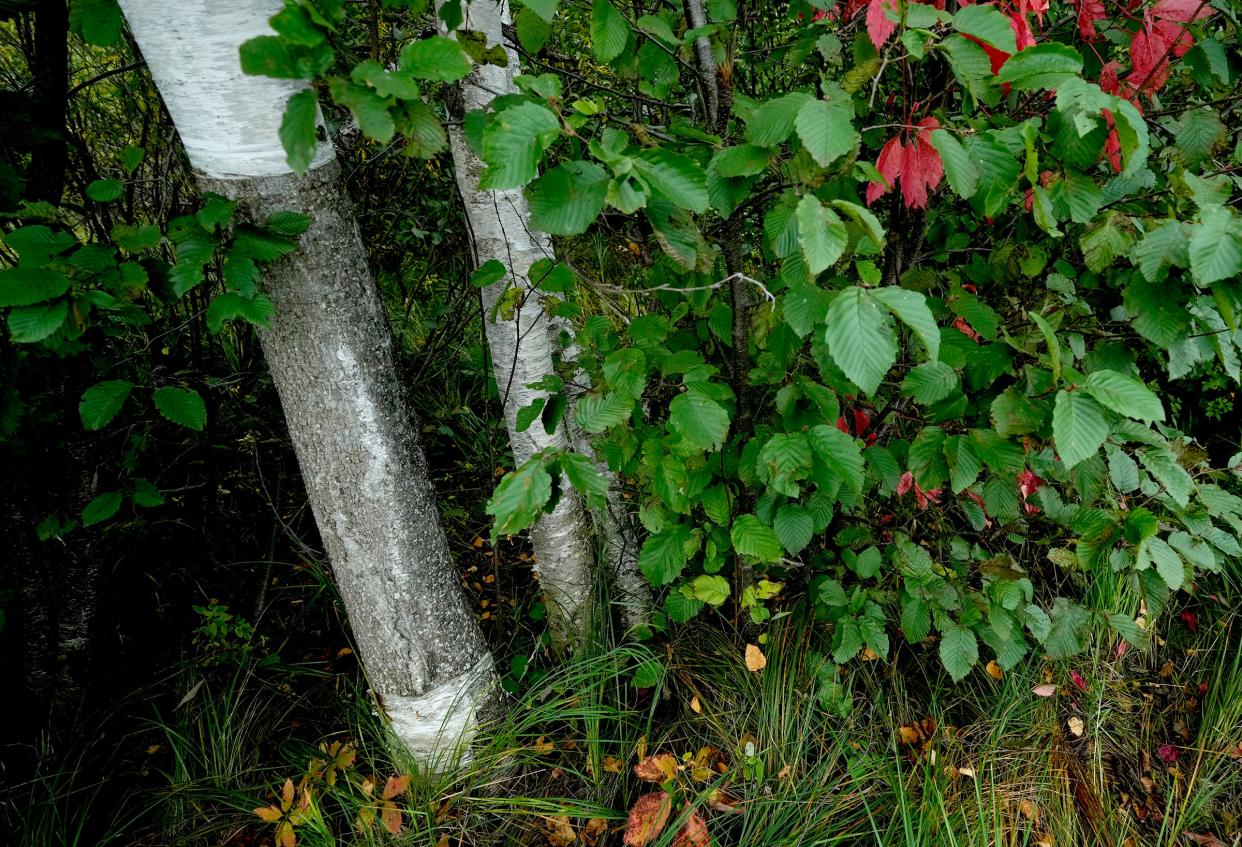
There’s also room for expanded legal action to give tribes more say in natural resources protection. Lundberg said Earthjustice is interested in the concept of Free, Prior and Informed Consent, a right granted in the United Nations’ Declaration on the Rights of Indigenous Peoples. It allows them to engage in negotiations over any project that would impact their lands, and not consent to the project if they believe it would be harmful.
The U.S. can move closer to that model, Lundberg said, or even toward a true co-management model that would recognize that tribes and other governments have a shared interest in natural resources and ecosystems, and can collaborate on how best to manage them.
More: After decades of damage, Oneida Reservation projects 'repair the land to what it wanted to be'
As it stands now, Western society reacts to problems in the moment, Gravelle said. Indigenous thinking does the opposite, looking for solutions that offer protection for seven generations to come. Adopting the Indigenous attitude, she said, would make everyone better off as climate change continues to unfold.
Until then, tribes around the Great Lakes are on the front lines, incorporating traditional knowledge to regenerate the land, taking steps to improve air quality, and protecting freshwater.
Cindy Reffke helped organize a UW-Green Bay wild rice reseeding project near Green Bay in 2021.
"I've always believed that if we would've listened to Native Americans (on the environment)," she said, "we wouldn't have the problems we have today."
Support for this project
This project is supported by a climate change reporting grant from the Poynter Institute, through funding by the Joyce Foundation. All content was produced by the Journal Sentinel staff under the guidance of its editors.
The reporters
Caitlin Looby has covered the Great Lakes Basin for the Journal Sentinel since June 2022 through Report for America. She has a doctorate in ecology and evolutionary biology, and has been a science researcher, teacher and writer.
Madeline Heim has covered the Mississippi River basin for the Journal Sentinel since May 2022 through Report for America. She has been a health and science writer, and was the lead Gannett Wisconsin reporter on the COVID outbreak.
Frank Vaisvilas has covered Indigenous issues for Gannett Wisconsin since June 2020, and has been based at the Journal Sentinel since June 2023. Vaisvilas’ roots on his mother’s side are Yaqui, the Indigenous people of Arizona and Sonora, Mexico.
This article originally appeared on Milwaukee Journal Sentinel: Great Lakes native tribes knowledge key to climate change work
